- Home
- Cao Xueqin
The Crab-Flower Club
The Crab-Flower Club Read online
THE STORY OF THE STONE
A CHINESE NOVEL BY
CAO XUEQIN
IN FIVE VOLUMES
*
VOLUME II
‘THE CRAB-FLOWER CLUB’
*
TRANSLATED BY
DAVID HAWKES
PENGUIN BOOKS
Contents
NOTE ON SPELLING
PREFACE
CHAPTER 27
Beauty Perspiring sports with butterflies by the Raindrop Pavilion;
And Beauty Suspiring weeps for fallen blossoms by the Flowers’ Grave
CHAPTER 28
A crimson cummerbund becomes a pledge of friendship;
And a chaplet of medicine-beads becomes a source of embarrassment
CHAPTER 29
In which the greatly blessed pray for yet greater blessings;
And the highly strung rise to new heights of passion
CHAPTER 30
Bao-chai speaks of a fan and castigates her deriders;
Charmante scratches a ‘qiang’ and mystifies a beholder
CHAPTER 31
A torn fan is the price of silver laughter;
And a lost kylin is the clue to a happy marriage
CHAPTER 32
Bao–yu demonstrates confusion of mind by making his declaration to the wrong person; And Golden shows an unconquerable spirit by ending her humiliation in death
CHAPTER 33
An envious younger brother puts in a malicious word or two;
And a scapegrace elder brother receives a terrible chastisement
CHAPTER 34
A wordless message meets with silent understanding;
And a groundless imputation leads to undeserved rebukes
CHAPTER 35
Sulky Silver tastes some lotus-leaf soup;
And Golden Oriole knots a flower-patterned fringe
CHAPTER 36
Bao-chai visits Green Delights and hears strange words from a sleeper; Bao-yu visits Pear-tree Court and learns hard facts from a performer
CHAPTER 37
A happy inspiration prompts Tan-chun to found the Crab-flower Club; And an ingenious arrangement enables Bao-chai to settle the chrysanthemum poem titles
CHAPTER 38
River Queen triumphs in her treatment of chrysanthemum themes;
And Lady Allspice is satirical on the subject of crabs
CHAPTER 39
An inventive old countrywoman tells a story of somewhat questionable veracity;
And an impressionable young listener insists on getting to the bottom of the matter
CHAPTER 40
Lady Jia holds two feasts in one day in the Prospect Garden;
And Faithful makes four calls on three dominoes in the Painted Chamber
CHAPTER 41
Jia Bao-yu tastes some superior tea at Green Bower Hermitage;
And Grannie Liu samples the sleeping accommodation at Green Delights
CHAPTER 42
Lady Allspice wins over a suspicious nature with some well-intentioned advice;
And River Queen enhances her reputation as a wit with some amusing sarcasms
CHAPTER 43
An old woman’s whim is the occasion of a birthday collection;
And a young man’s remorse finds solace in a simple ceremony
CHAPTER 44
Xi-feng’s jealousy is the object of an unexpected provocation;
And Patience’s toilet is a source of unexpected delight
CHAPTER 45
Sisterly understanding finds expression in words of sisterly frankness; And autumnal pluviousness is celebrated in verses of autumnal melancholy
CHAPTER 46
An awkward person is given an awkward mission;
And a faithful maid vows faithfulness unto death
CHAPTER 47
In pursuit of love the Oaf King takes a fearful beating;
And from fear of reprisal the Reluctant Playboy makes a hasty getaway
CHAPTER 48
The Love-Deluded One turns his thoughts to trade and travel;
And the Poetry Enthusiast applies herself to making verses
CHAPTER 49
Red flowers bloom brighter in dazzling snow;
And venison reeks strangely on rosebud lips
CHAPTER 50
Linked verses in Snowy Rushes Retreat;
And lantern riddles in the Spring In Winter Room
CHAPTER 51
A clever cousin composes some ingenious riddles;
And an unskilful physician prescribes a barbarous remedy
CHAPTER 52
Kind Patience conceals the theft of a Shrimp Whisker bracelet;
And brave Skybright repairs the hole in a Peacock Gold snow-cape
CHAPTER 53
Ning-guo House sacrifices to the ancestors on New Year’s Eve;
And Rong-guo House entertains the whole family on Fifteenth Night
APPENDIX I Regulated Verse
APPENDIX 11 Threesomes with the Dominoes
APPENDIX III Unsolved Riddles
CHARACTERS IN VOLUME 2
GENEALOGICAL TABLES
PENGUIN CLASSICS
THE STORY OF THE STONE
VOLUME II
ADVISORY EDITOR: BETTY RADICE
CAO XUEQIN (1715?–63) was born into a family which for three generations held the office of Commissioner of Imperial Textiles in Nanking, a family so wealthy that they were able to entertain the Emperor Kangxi four times. But calamity overtook them and their property was confiscated. Cao Xueqin was living in poverty near Peking when he wrote his famous novel The Story of the Stone (also known as The Dream of the Red Chamber), of which this is the second volume. The four other volumes, The Golden Days, The Warning Voice, The Debt of Tears and The Dreamer Wakes, are also published in the Penguin Classics.
DAVID HAWKES was Professor of Chinese at Oxford University from 1959 to 1971 and a Research Fellow of All Souls College, from 1973 to 1983. He now lives in retirement in Wales.
IN MEMORIAM
R. C. Z.
Note On Spelling
CHINESE proper names in this book are spelled in accordance with a system invented by the Chinese and used internationally, which is known by its Chinese name of Pinyin. A full explanation of this system will be found overleaf, but for the benefit of readers who find systems of spelling and pronunciation tedious and hard to follow a short list is given below of those letters whose Pinyin values are quite different from the sounds they normally represent in English, together with their approximate English equivalents. Mastery of this short list should ensure that names, even if mispronounced, are no longer unpronounceable.
c = ts
q = ch
x = sh
z = dz
zh = j
CHINESE SYLLABLES
The syllables of Chinese are made up of one or more of the following elements:
1. an initial consonant (b.c.ch.d.f.g.h.j.k.l.n.m.p.q.r.s.sh.t.w.x.y.z.zh)
2. a semivowel (i or u)
3. an open vowel (a.e.i.o.u.ü), or
a closed vowel (an.ang.en.eng.in.ing.ong.un), or
a diphthong (ai.ao.ei.ou)
The combinations found are:
3 on its own (e.g. e, an, ai)
1 + 3 (e.g. ba, xing, bao)
1 + 2 + 3 (e.g. xue, qiang, biao)
INITIAL CONSONANTS
Apart from c = ts and z = dz and r, which is the Southern English r with a slight buzz added, the only initial consonants likely to give an English speaker much trouble are the two groups
j q x and zh ch sh
Both groups sound somewhat like English j ch sh; but whereas j q x are articulated much farther forward in the mouth than our j ch sh, the sounds zh
ch sh are made in a ‘retroflexed’ position much farther back. This means that to our ears j sounds halfway between our j and dz, q halfway between our ch and ts, and x half-way between our sh and s; whilst zh ch sh sound somewhat as jr, chr, shr would do if all three combinations and not only the last one were found in English.
SEMIVOWELS
The semivowel i ‘palatalizes’ the preceding consonant: i.e. it makes a y sound after it like the i in onion (e.g. Jia Lian)
The semivowel u ‘labializes’ the preceding consonant: i.e. it makes a w sound after it, like the u in assuages (e.g. Ning-guo)
VOWELS AND DIPHTHONGS
i. Open Vowels
a is a long ah like a in father (e.g. Jia)
e on its own or after any consonant other than y is like the sound in French æuf or the er, ir, ur sound of Southern English (e.g. Gao E, Jia She)
e after y or a semivowel is like the e of egg (e.g. Qin Bang-ye, Xue Pan)
i after b.d.j.l.m.n.p.q.t.x.y is the long Italian i or English ee as in see (e.g. Nannie Li)
i after zh.ch.sh.z.c.s.r. is a strangled sound somewhere between the u of suppose and a vocalized r (e.g. Shi-yin)
i after semivowel u is pronounced like ay in sway (e.g. Li Gui)
o is the au of author (e.g. Duo)
u after semivowel i and all consonants except j.q.x.y is pronounced like Italian u or English oo in too (e.g. Bu Gu-xiu)
u after j.q.x.y and ü after 1 or n is the narrow French u or German ü, for which there is no English equivalent (e.g. Bao-yu, Nü-wa)
ii. Closed Vowels
an after semivowel u or any consonant other than y is like an in German Mann or un in Southern English fun (e.g. Yuan-chun, Shan Ping-pen)
an after y or semivowel i is like en in hen (e.g. Zhi-yan-zhai, Jia Lian)
ang whatever it follows, invariably has the long a of father (e.g. Jia Qiang)
en, eng the e in these combinations is always a short, neutral sound like a in ago or the first e in believe (e.g. Cousin Zhen, Xi-feng)
in, ing short i as in sin, sing (e.g. Shi-yin, Lady Xing)
ong the o is like the short 00 of Southern English book (e.g. Jia Cong)
un the rule for the closed u is similar to the rule for the open one: after j.q.x.y it is the narrow French u of rue; after anything else it resembles the short 00 of book (e.g. Jia Yun, Ying-chun)
iii. Diphthongs
ai like the sound in English lie, high, mine (e.g. Dai-yu)
ao like the sound in how or bough (e.g. Bao-yu)
ei like the sound in day or mate (e.g. Bei-jing)
ou like the sound in old or bowl (e.g. Gou-er)
The syllable er is a sound on its own which does not fit into any of the above categories. It sounds somewhat like the word err pronounced with a strong English West Country accent, (e.g. Bao Er).
Preface
THE twenty-seven chapters of this second volume of The Story of the Stone cover a period of less than nine months – 257 days, to be precise – from the twenty-fifth of the fourth month of the year in which Bao-yu and Wang Xi-feng nearly died from the effects of black magic, to the night of the Lantern Festival on the fifteenth of the first month of the following year – a year to the day after the Imperial Concubine’s ‘visitation’ which was described at some length in chapter 18 of the first volume.
Although this second volume is not without its excitements – two suicides and three incapacitating beatings in a matter of months seems a fairly eventful record even for a great Manchu household of the early eighteenth century – it is a picture of the daily routines in the life of this great household that emerges most vividly from its pages. No more, in this volume, are the supernatural overtones which reverberated through volume 1 to be heard: no Fairy Disenchantment here, no Magic Mirror, not even a glimpse of that disreputable but mysterious pair, the mad monk and the crippled Taoist. The narrative of this second volume is firmly grounded in the affairs of this world, and the author himself seems to share the indefatigable preoccupation of his characters with things: never have clothes and furnishings and objets d’art been described with such meticulous and loving care as they are in the pages of this volume.
Apart from this interest – in their case aesthetic rather than acquisitive – in material possessions, the preoccupations of the younger characters in this novel are mainly literary ones, and the text abounds in passages containing references to books, plays and poems which to the Western reader, lacking the literary background that Cao Xueqin was able to take for granted in his Chinese contemporaries, might often seem puzzling or incomprehensible. I make no apology for having occasionally amplified the text a little in order to make such passages intelligible. The alternative would have been to explain them in footnotes; and though footnotes are all very well in their place, reading a heavily annotated novel would seem to me rather like trying to play tennis in chains.
But these occasional small amplifications are not the only departures I have made from the available texts. For the benefit of the learned reader I ought perhaps to explain that this translation in effect represents a new edition of my own. For reasons which I shall endeavour to make clear, I do not think it is possible for a modern translator to follow any of the existing versions without deviating from it occasionally.
Owing to the unfinished state in which Cao Xueqin left it, The Story of the Stone contains a number of obviously unintentional discrepancies: for example, the fact that the Duke of Rong-guo’s name is given as ‘Jia Yuan’ in chapter 2 but as ‘Jia Fa’ in chapter 53. A careful examination of the existing texts suggests that much of Gao E’s editorial activity was aimed at removing inconsistencies of this sort. Unfortunately his alterations are sometimes misguided and not infrequently have the effect of making the text actually worse. Observing the number of cases in which his editing is demonstrably wrong, well-wishers are apt to advise the translator that he should forget about Gao E altogether and stick to the text of the manuscripts. But since it was in many cases the unsatisfactory state of the manuscripts that prompted Gao E’s editorial intervention in the first place, to follow this advice would simply mean abandoning one set of problems for another. Experience has taught me that it is best to treat any divergence of Gao E’s text from the manuscripts as a signal to begin looking for the difficulty that prompted the alteration and, having identified it, endeavour, where necessary, to find a solution of one’s own.
Let me illustrate this with an example.
There is a passage towards the end of chapter 28 in which Bao-yu calls for a maid to take some things to Dai-yu. The text of this in Gao E’s printed edition is as follows:
Calling Nightingale to him, he said: ‘Take these things to your mistress.’
‘How strange!’ we think when we read this. ‘Why should he go to the trouble of calling over Dai-yu’s maid Nightingale when he is surrounded by maids of his own ? And how rude, to summon her without a by-your-leave to her mistress!’
Now if we turn from the printed text of Gao E’s edition to the photographic facsimile of Gao E’s manuscript draft which was published in Peking in 1963 we find:
Calling Nightingale to him, he said: ‘Take these things to your mistress.’
‘Miss Lin’ has been crossed out and ‘your mistress’ substituted.
Turning now from Gao E’s draft to the photographic facsimile of the ‘Geng-chen’ Red Inkstone manuscript (Peking 1955) we find:
Calling Zi-juan to him, he said: ‘Take these things to Miss Lin.’
‘Zi-xiao’ has been corrected to ‘Zi-juan’ (Nightingale) by the alteration of the single character ‘xiao’, and someone, perhaps the person who made the correction having second thoughts, has later crossed out the ‘juan’ but put nothing else in its place.
Zi-xiao makes only one other appearance in the ‘Geng-chen’ text, in a list of maids’ names in chapter 27. There, too, the ‘xiao’ has been crossed out and she has been turned into Nightingale by the substitution of ‘juan’ for ‘xiao
’. This time there have been no second thoughts – though, curiously enough, ‘Nightingale’ in this case is quite certainly wrong, because the narrative makes it clear that Nightingale could not at that moment have been in the company of the other maids listed. In Gao E’s printed text we find her place in the list taken by the name of one of Bao-yu’s maids, Ripple.
If, in the passage at the end of chapter 28, it is in fact Nightingale that Bao-yu is talking to, ‘your mistress’ rather than ‘Miss Lin’ would be the way in which he would refer to Dai-yu. In that case Gao E’s alteration would be an improvement. But though correct in his suspicion that something was wrong with the text, Gao E was incorrect in his diagnosis of what it was. In the text(s) he was editing it was ‘Nightingale’ that was wrong, not ‘Miss Lin’. So in altering ‘Miss Lin’ and leaving ‘Nightingale’, though acting with the best intentions, he only succeeded in making matters worse.
The mysterious ‘Zi-xiao’ must belong to a stage in the novel’s development in which Cao Xueqin had still not finally settled on the names of some of the maids. Obviously the person intended in both the passages where her name occurs is one of Bao-yu’s senior maids: Skybright, Emerald, Musk or Ripple. In translating the passage in chapter 28 I have in fact put ‘Ripple’.
If making emendations of this kind is felt to be outside the proper scope of a mere translator, I can only plead my concern for the Western reader, who is surely sufficiently burdened already with the task of trying to remember the novel’s hundreds of impossible-sounding names, without being subjected to these vagaries of an unfinished and imperfectly edited text.
There are some discrepancies which no amount of editing could remove and with which it would be dangerous to tamper: for example, Bao-yu’s and Bao-chai’s repeated assertions in the opening chapters of volume 2, that he and Dai-yu grew up together from infancy and that Bao-chai was a comparative late-comer, clash with the narrative in chapters 3 and 4, in which Bao-chai is shown arriving only days or at the most weeks after Dai-yu.

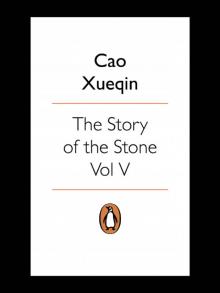 The Dreamer Wakes
The Dreamer Wakes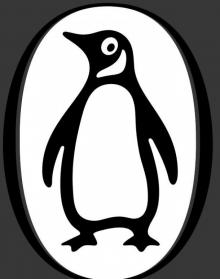 The Warning Voice
The Warning Voice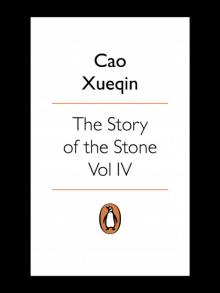 The Debt of Tears
The Debt of Tears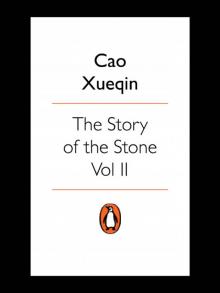 The Crab-Flower Club
The Crab-Flower Club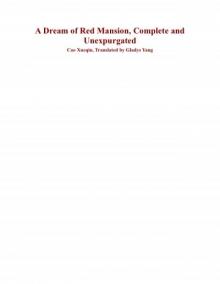 A Dream of Red Mansion
A Dream of Red Mansion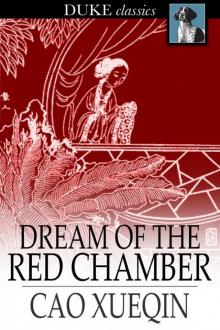 The Dream of the Red Chamber (Selection)
The Dream of the Red Chamber (Selection)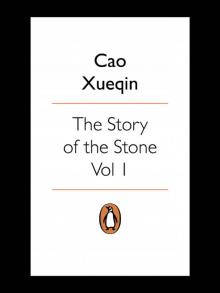 The Golden Days
The Golden Days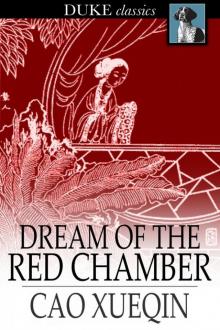 The Dream of the Red Chamber
The Dream of the Red Chamber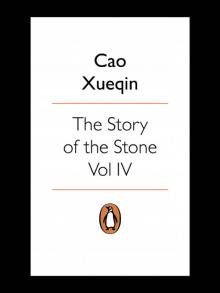 The Story of the Stone
The Story of the Stone